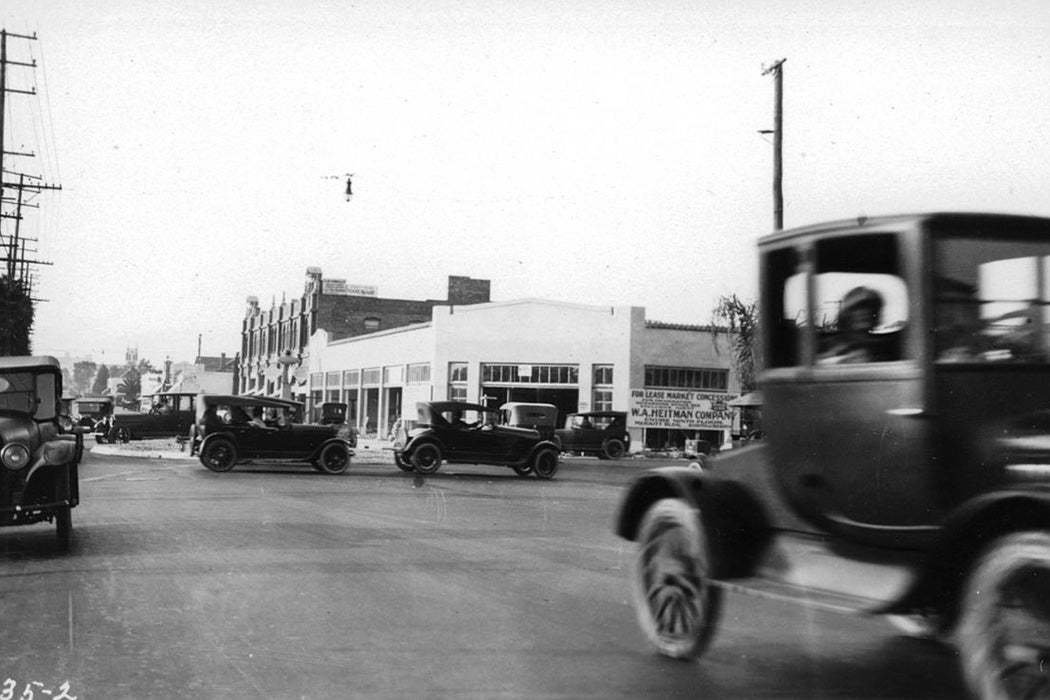“Now we see women driving motor-cars for all the world as if they belonged at the wheel!” exclaimed Herbert Ladd Towle in a breathless early 20th-century hot take on the increasing number of women drivers. Don’t tell Towle: By 1914, 15 percent of all cars were owned by women—and, as Virginia Scharff explains, their love of driving in auto-obsessed Los Angeles created traffic jams and a battle over women’s rightful place that played out on the streets of downtown LA in 1920.
Though a majority of people headed downtown on city-operated streetcars, public transportation at the time was uncomfortable, crowded, and inconvenient. Streetcars were also considered to be no place for a nice woman—especially one traveling alone. Women who did brave the trolleys were sexually harassed, writes Scharff, as well as pilloried by the press suggesting they should stay home instead of venturing into public.
Perhaps unsurprisingly, many women chose to drive downtown instead. Of course, women who ventured into downtown Los Angeles by motor vehicle were not exempt from criticism either. Charged with laziness, ineptitude, and frivolity, they faced stereotypes about women’s ability to drive and complaints about the cars that swamped streets downtown.
In 1920, the LA City Council put a no-parking ordinance into place downtown. Because women were expected to do the family shopping, they were the ones most affected by the ordinance. Though Scharff does not blame the Council for an overt attempt to rein in women using an anti-parking ordinance, she puts the law in a context of suspicion of women who dared to show their faces publicly, challenging social mores even as they became part of the fabric of urban life.
But these supposed societal menaces had an ace in their fashionable sleeves: They turned out to be the main patrons of downtown businesses. Business dropped up to 40 percent during the first days of the ordinance, alarming store owners and raising concerns that they would be driven out of business by stores elsewhere in LA.
The most visible—and effective—protest of the ban involved women in cars. Organized by silent movie star Clara Kimball Young, women drove down the streets in a parade of protest that was several miles in length. Pinched on both sides by angry business owners and angry drivers, the Los Angeles City Council finally folded and rescinded the ordinance.
“The relatively affluent women who used automobiles to gain access to public spaces in 1920,” writes Scharff, “contested the boundaries of gender, asserting their right to be in the thick of commercial life and demonstrating the significance of their actions to public culture.” Today, people don’t look twice when they see a woman driving—though stereotypes about women drivers still abound and women are largely overcharged by auto repair shops. Women in cars have always been a force to be reckoned with.







